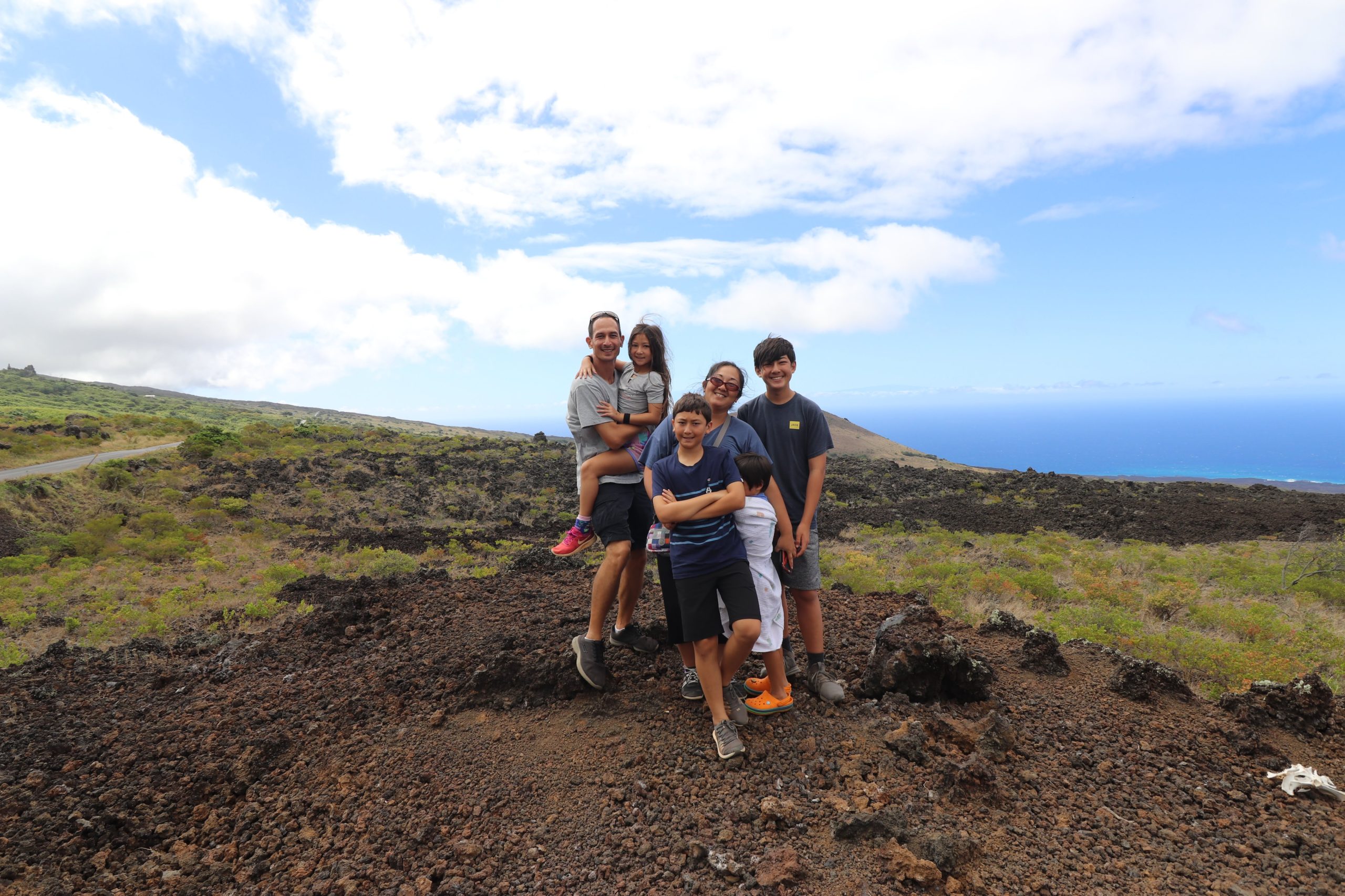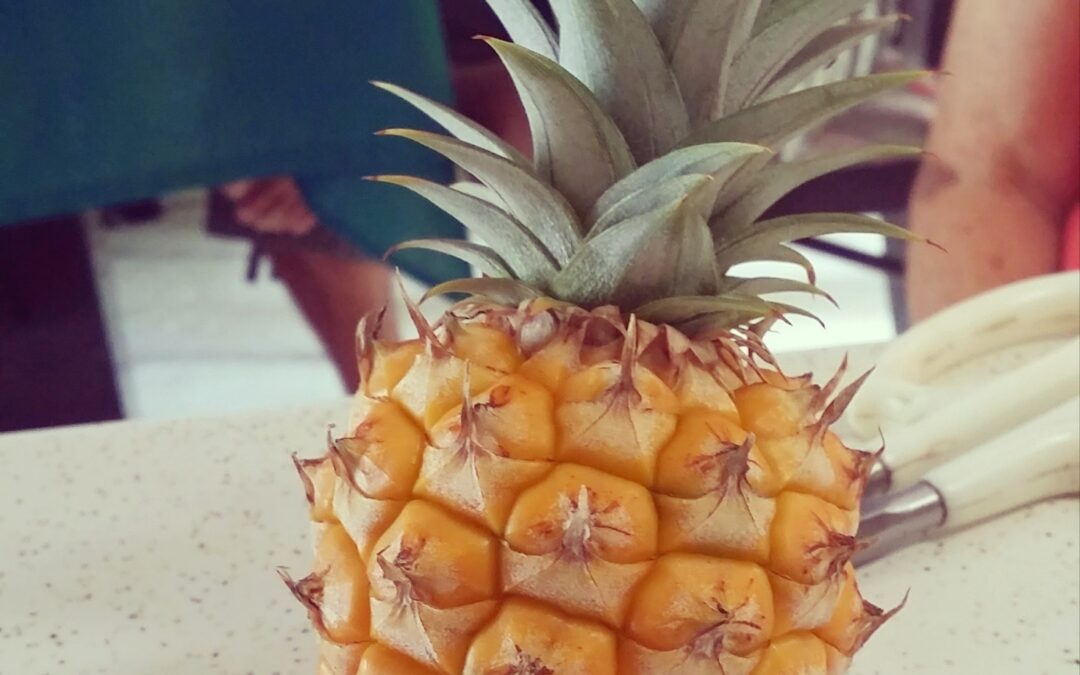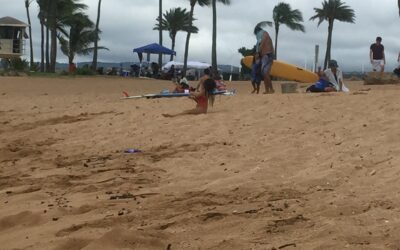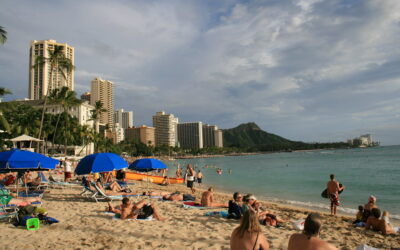A Little Bit About Maui…
Growing up in Oahu, whenever we visited Maui, everything about the island always seemed sunnier with brighter skies and bluer oceans (than Oahu). While I’m not sure if this is actually true or not, Maui is definitely a gorgeous island, known for its beautiful beaches and sunny skies. With over 120 miles of shoreline and 80 beaches, Maui has more beaches and coastline than any other island in Hawaii. In addition, from calm waters to crashing waves, and pristine white sand beaches to the rarer black or red sand shores, Maui has a wide appeal to a variety of travelers.
Okay, first things first: Maui is the second-largest island of the Hawaiian Island chain and is nicknamed “The Valley Isle.”
And, that’s what I learned in my 5th grade Hawaiiana class, however, I don’t think Maui’s often called “the Valley Isle” IRL. In fact, it wasn’t until much later, that I learned the nickname has to do with Maui’s geography, specifically because its landscape contains a large valley between two dormant volcanoes – Haleakala in the east and Mauna Kahalawai in the west – making it a very appropriate name for beautiful Maui.
Fun Fact: Haleakala means “House of the Sun” and, at 10,023 feet high, 4,000 feet deep, and 21 miles across its crater, it’s the largest dormant volcano in the world! (This fact I did hear about this just growing up in Hawaii. We locals are proud of our little state in the middle of the Pacific Ocean so we love all our fun “Hawaii” facts…especially, my Dad. Hehe.)
Airports
The main airport is Kahului Airport, located in Central Maui. Maui has three airports on the island, but the other two airports – Kapalua Airport and Hana Airport – do not have direct flights to the US mainland. I like to visualize the location of Kahului Airport as in the neck between the head and the bust of the island, but that might just be me.
Transportation
When planning your trip to Maui, the type of transportation you need depends on your itinerary. Maui is a beautiful island and, When we visit Maui, I just love driving around and stopping along the roadside just to take pictures of whatever scenery catches our eyes (in a safe area, of course!) – because of that, having a rental car for at least a portion of the trip is an absolute must! However, if you’re planning to take advantage of the amenities of an all-inclusive resort and the surrounding shops and eateries for most of your trip, I’d say, a shuttle between the airport and your hotel might make more sense for your vacation plans. Ubers and taxis are also available, but tend to be a little hard to find for late night trips and longer distanced rides.
Another way to see the sights without having to navigate unknown roads (or deal with road to Hana traffic!) would be to utilize the various organized tour buses and shuttles throughout the trip. There are tours specifically to see Haleakala, the road to Hana, Maui’s beautiful beaches, and much more!
For the cheapest option, the Maui Public Transit System – Maui Bus – consists of 14 bus routes and provides service within and between various towns in Central, Upcountry, South, and West Maui, including Haiku and Kula. As of 2024, the one-way general fare is $2.00, the Reduced Fare is $1.00, and children under 5 years old travel for free when accompanied by a paying guardian, and there are daily passes available (fixed routes) for $4.00.
Like many of the local bus systems around the islands, Maui Buses are often delayed due to congestion or traffic. In addition, routes in the evening may be few and far between.
If you plan to travel around Maui during your trip, it is highly recommended to get your own rental car (even if it’s only for a portion of your vacation).
Regions
For geographic and weather purposes, Maui is typically divided into five regions: Central Maui, Upcountry Maui, East Maui, South Maui, and West Maui.
Central Maui: Besides the main airport in Kahului, Central Maui also houses government offices, residential areas, and a variety of retail and commercial developments.
Upcountry Maui: Many of the farms, dairies, and ranches in Maui are located in Upcounty Maui due to the wetter climates and rich volcanic soil of that area. The roads in Upcountry Maui also lead you to Haleakala National State Park and the road to Hana.
East Maui: Home to rural, lush scenery, waterfalls, pools, and ocean views, this is where you will find Hana Highway and the quaint towns of Pai’a and Hana as well as Kaihalulu Red Sand Beach and Waianapanapa State Park Black Sand Beach.
South Maui: A beautiful area on the southern side of Haleakala, South Maui houses large resorts in Kihei, Wailea, and Makena. Oneuli Beach, one of Maui’s black sand beaches, is also located on the south side of the island.
West Maui: Once the royal capital of Hawaii and an important whaling port, the historic town of Lahaina is now a beautiful location for fine dining, shopping, and hotels. West Maui is also known of the resort areas of Kapalua and Ka’anapali with luxury resorts and hotels, two world-class golf courses, and more.
Weather
Weather Across the Islands
There are basically two main seasons throughout most of the Hawaiian Islands: a warm, drier “summer” season – from April to November – and a “winter” season – from mid-November to March – which has slightly cooler temperatures and wetter weather. *This is approximate, as I’ve had hot Decembers and chilly Septembers but, Hawaii weather is pretty nice year round, so I wouldn’t be too worried.
There is no “monsoon” season like in many tropical climates even though it tends to rain a little more in the winter, however, there is a Hurricane Season which is between June through November, with August and September being the most active months.
A bit more on hurricane season: Hurricane season lasts from June through November. We actually do not get hit with a hurricane very often, even though some years, several come close to the Hawaiian Islands. In fact, since the 1950s, only five hurricanes have landed on the Hawaiian Islands: Hurricane Nina in 1957, Hurricane Dot in 1959, Hurricane Iwa in 1982, and Hurricane Iniki in 1992.
Often before hurricanes reach the Hawaiian Islands they get downgraded to tropical storms or depressions. Keep in mind, these storms can still cause a lot of rain, flooding, or damage to land and property even though they are no longer labeled as “hurricanes.”
If you are traveling during hurricane season, I would recommend, keeping an eye on the weather near your travel dates. Most likely, hurricanes downgrade or veer away from the Hawaiian Islands before they cause harm, but use your personal discretion to decide if it makes sense to cancel or alter your travel plans since the weather may still impact flights and activities during your vacation.
Maui Weather
Typically, however, due to variations in geography and topography, Maui’s climates can be divided into regional microclimates: Central Maui is usually warm, sunny, and dry throughout the year, Upcountry Maui typically has cooler weather, ranging from 40F (4C) to 80F (27C). This was noticeable even when we drove from Central Maui to Kula in Upcountry Maui one summer afternoon while on Maui for a family vacation. (Wow, it felt really nice to get out of the 90-degree weather in Kahului to the low 70s temperatures in Kula!) East Maui tends to have more rainfall, evident from the beautiful forests, tree canopies, and waterfalls that grace the area, while West Maui is typically drier and gets only around 10 inches of rain annually.
Lahaina and West Maui Average Temperature Ranges in Fahrenheit
| JAN | FEB | MAR | APR | MAY | JUN | JUL | AUG | SEP | OCT | NOV | DEC | |
| TEMP | 64-82 | 64-82 | 65-83 | 66-84 | 67-85 | 69-86 | 70-87 | 71-88 | 71-88 | 70-87 | 68-85 | 66-83 |
The average annual precipitation is 13.54 inches, with the heaviest rainfall in December and January.
Hana and East Maui Average Temperature Ranges in Fahrenheit
| JAN | FEB | MAR | APR | MAY | JUN | JUL | AUG | SEP | OCT | NOV | DEC | |
| TEMP | 65-78 | 64-78 | 65-78 | 67-78 | 68-80 | 70-82 | 72-83 | 72-83 | 70-83 | 70-82 | 69-80 | 67-79 |
The average annual precipitation is 79.23 inches and is usually evenly spread across the year, although March often sees the heaviest rainfall
Other Things About Maui
Haleakala: It’s important to note that due to Haleakala’s high elevation, it can get cold, not low 70s F “Hawaii cold,” but real cold, like mid-30s F to high 40s F not including windchill. If you are planning to visit – especially to watch the sunrise or sunset – make sure you have cold-weather clothing on hand. In general, Haleakala summit temperatures range from below freezing (32F/0C) to 65F/18C and it has been known to snow in the winter.
Whale-watching: During the early to mid-19th century, Lahaina was a whaling port and focal point for the whaling industry. Prior to the Lahaina wildfires, thousands of tourists and locals would come to Maui to whale-watch from the coasts and by charter boats. Despite the tragedy and impact to many residents and businesses, Lahaina whale-watching tours have reopened and other locations on Maui also offer whale-watching tours as well.
Maui, in general, has always been a great island to watch Humpback whales. Humpback whales migrate to the Hawaiian Islands annually between November through April to breed and give birth to their calves; as many as 10,000 whales travel from Alaska to Hawaii to make the over 3500-mile winter migration. Although there are always whale sightings as early as October and as late as May, often my friends (who’d take a Maui vacation just to charter a whale-watching boat) swore that January and February were the best months to go whale watching. Good luck!
Maui County: Maui is not only the name of the island but the name of the county as well and includes the islands of Maui, Molokai, Lanai, and Kaho’olawe. Molokai and Lanai have separate airports and access to Koho’olawe is restricted.
Basic things about the Hawaiian Islands
Hawaii is the 50th state in the United States, our currency is the US dollar, and English is the most commonly spoken language in the Hawaiian Islands. We follow Hawaii Standard Time (GMT -10 hours) and Hawaii does not observe Daylight Savings Time. As of the 2020 census, our local population is very ethnically diverse with 22.9% White, 37.2% Asian, 10.8% Native Hawaiian and/or Pacific Islander, and 1.6% Black, with 25.3% of the population classifying themselves as multi-racial.
Fun Fact: Hawaii is the only state with two official languages: English and Hawaiian. While the Hawaiian language is not as commonly spoken as English, be ready to see a large number of local street names, towns, restaurants, historic sites, and more with Hawaiian names.
Travel: When visiting Hawaii from another state or country, the flight attendants will announce that you must consume all foods before landing and you must fill out a declaration form from the U.S. Department of Agriculture. This is required for each person arriving in Hawaii to prevent uninspected plants and animals from entering the Hawaiian Islands. There are also restrictions for carry-on luggage regarding certain fruits and vegetables, plants, and flowers between islands. Please check before boarding, even if you are just interisland-hopping.
Please note: The primary reason for the form and these agricultural restrictions is to protect the local ecosystems which are not always built to protect themselves from invasive pests, plants, and animals. When an invasive plant, insect, or animal is placed in the island’s local ecosystem, at a minimum, the invasive pests are annoying and costly to remove, but in more severe cases, they can completely decimate native plants and animals. To date, hundreds of plant and animal species have gone extinct with hundreds more on Endangered Species lists. As part of a community that enjoys the Hawaiian Islands, we’d like to preserve the remaining native species to the best of our abilities. Thank you!









